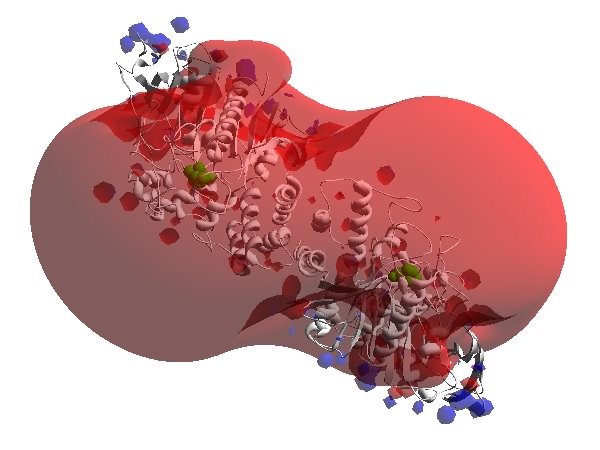Molecular Graphics ManifestoHow to Do It |
5. How can students follow up on classes that involve graphics?
A related question is, what are the poor students to do about taking notes during a portion of class that features graphics-based illustration or discussion of structure? Clearly they cannot take notes by making drawings of complex graphics. In my view, the classroom graphics should be available to them for subsequent exploration at a convenient time and pace. One approach is to put the classroom graphics files or views on the web, so that students always know that they can explore the subject further. Then they can relax, look at the graphics carefully, ask questions, and participate in discussion. This approach may provide the added bonus of encouraging participation and discouraging note-taking in class, a step towards a more mature approach to the classroom.
To prepare myself for classroom graphics, I explore the protein beforehand, and make up some good starting files and discussion notes for the classroom tour. Then I put the starting files on the web in a tutorial-like page. Text on the page directs students to download the file and to use graphics to find structural features, make measurements, and answer questions. This activity is organized as a series of questions that guide the student through a tour similar to the guided tour I plan to lead in class. In some cases, I simply use the web page itself as the starting point in class.
Figure: Acetylcholinesterase with its electrostatic
potential surface. PDB 2ACK.
Created in Deep
View. Click image to enlarge.
